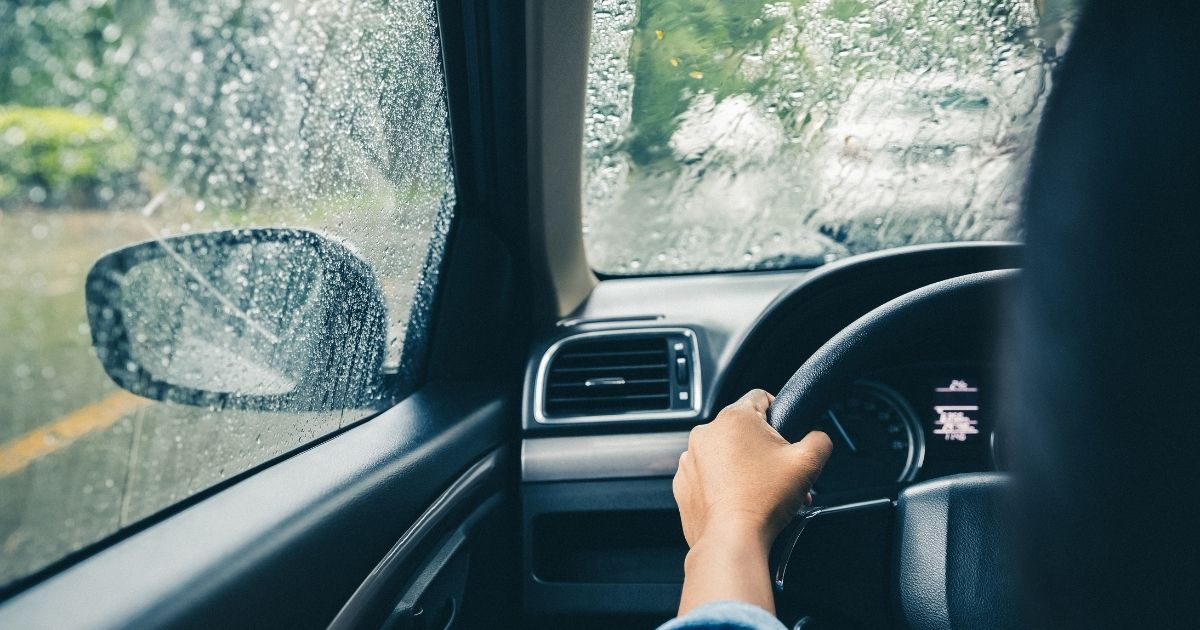Rainstorms make driving much more treacherous. The harder the rain falls, the more dangerous it becomes. The same is true when the temperature is nearly freezing and the roads begin to ice over.
Even a small amount of water on the road could cause hydroplaning. The rain and misting of water thrown up by other vehicles greatly decrease your ability to see and other drivers’ abilities to see you.
Fortunately, you can take some simple measures to make driving in the rain safer. The following tips could help you drive safely in rainy weather and prevent a car accident.
Make Sure Your Car Is in Good Condition
You cannot drive safely under any conditions if your vehicle is in poor condition. You should make sure your tires, wiper blades, and washer fluid are in good condition when you are about to drive in the rain.
You should inspect the tires and check the air pressure in each to make sure they are properly inflated. A properly inflated tire will help the tread make good contact with the road and expel any water underneath.
The windshield wiper blades must be in good condition to remove water, and the washer fluid should be full to enable you to see. Worn wiper blades could smear the rain and road grime that collect on the windshield, leading to low visibility. It also might create a blinding road glare from other vehicles’ headlights.
You also should ensure all lights are working so that other drivers can see you. Driving with the dimmers on when it is raining during daylight hours will increase your visibility and enable other drivers to see your vehicle.
Increase Your Following and Stopping Distance
Safe driving starts with slowing down and increasing your following distance. Slowing down will help you maintain stability when turning on wet roads.
Following about two car lengths behind the vehicle in front of you is good on dry roads. Because wet roads compromise traction, you have to increase that distance when it is raining or the roads are wet. Driving about three or four car lengths behind the vehicle in front of you will help ensure a safe stopping distance.
Even when you are not following another vehicle, you should give yourself more stopping distance. Adjusting your driving for road conditions is an important responsibility, and slowing down while increasing your following and stopping distance helps you do that.
Watch Out for Puddles and Flooded Roads
Whether you encounter puddles or flooded sections of roadway, you must be especially careful with how you handle them. Just driving through them could cause you to lose control of your vehicle or even lead to vehicle damage.
A puddle hides what is inside it and could be dangerous. The puddle might conceal a deep pothole or contain something else that might flatten your tire. Slowing down and going around when it is safe to do so could prevent an accident.
If the roadway is flooded, you should try to turn around and find another route. Even a couple of inches of flowing water could cause your vehicle to hydroplane and spin out of control.
Mount Holly Car Accident Attorney at the Law Office of David S. Rochman Can Help You After a Weather-Related Collision
Even the safest driver can be injured in a weather-related collision due to the negligence of another motorist. If you need legal help after a collision, speak with our Mount Holly car accident attorney at the Law Office of David S. Rochman. Call us at 856-751-2345 or contact us online to schedule a free consultation. Located in Mount Laurel, New Jersey, we serve clients in Burlington County and the surrounding areas.


